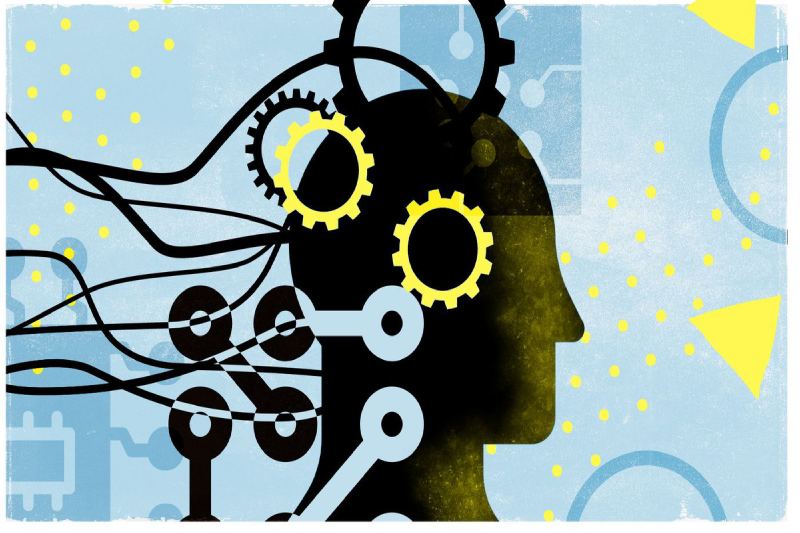The greatest innovation ever made by humanity is stalling out of the gate. Projects using machine learning have the potential to assist us in navigating the biggest hazards we face, such as child abuse, pandemics, wildfires, and climate change. It can improve healthcare, increase sales, reduce expenses, stop fraud, and streamline manufacturing.
However, ML projects frequently fall short of expectations or fail to launch at all. They incur heavy losses when they stall before deploying. The fact that businesses frequently concentrate more on the technology than on the best way to use it is one of the main problems. This is akin to being more enthusiastic about a rocket’s development than its eventual launch.
Changing a Misplaced Focus to Deployment from Technology
The issue with ML is its widespread use. Despite all the excitement surrounding the underlying technology, the specifics of how its implementation enhances corporate operations are sometimes overlooked. ML is currently too hot for its own benefit in this sense. The lesson has finally dawned on me after decades of consulting and organizing ML conferences.
Today’s ML enthusiasm is overblown because it perpetuates the ML fallacy, a widespread misunderstanding. It operates as follows: ML algorithms’ models are intrinsically valuable (which is not always true), as they can successfully produce models that stand up for new, unforeseen scenarios (which is both amazing and true). Only when machine learning (ML) generates organizational change, or when a model produced by ML is used to actively enhance operations, does ML become valuable. A model has no real value until it is actively employed to change the way your company operates. A model won’t deploy itself and won’t resolve any business issues on its own. Only if you use ML to cause disruptions will it truly be the disruptive technology that it promises to be.
Regrettably, companies frequently fall short in bridging the “culture gap” between data scientists and business stakeholders, which keeps models hoarded and prevents deployment. When it comes to “mundane” managerial tasks, data scientists—who carry out the model creation step—generally don’t want to be bothered with them and become completely fixated on data science. They frequently overlook a strict business procedure that would involve stakeholders in cooperatively planning the model’s adoption and instead take it for granted.
However, a lot of business people, particularly those who are already inclined to disregard the specifics because they are “too technical,” have been persuaded to believe that this amazing technology is a magic bullet that will fix all of their problems. When it comes to project specifics, they defer to data scientists. It’s difficult to convince them, though, when they eventually have to deal with the operational disruption that a deployed model would cause. The stakeholder is caught off guard and hesitates before changing operations that are essential to the business’s profitability.
The hose and the faucet don’t connect because no one takes proactive responsibility. The operational team drops the ball far too frequently when the data scientist presents a workable model and they aren’t prepared for it. Although there are amazing exceptions and spectacular achievements, the generally dismal performance of ML that we currently see portends widespread disillusionment and possibly even the dreaded AI winter.
The Resolution: Business Machine Learning
The solution is to meticulously plan for deployment right from the start of every machine learning project. It takes more preaching, mingling, cross-disciplinary cooperation, and change-management panache to lay the foundation for the operational change that deployment would bring about than many, including myself, first thought.
In order to do this, a skilled team needs to work together to follow an end-to-end procedure that starts with deployment backward planning. The six steps that make up this technique, which refer to as bizML, are as follows.
Determine the deployment’s objective
Describe the business value proposition (i.e., operationalization or implementation) and how machine learning (ML) will impact operations to make them better.
Example: In order to prepare a more effective delivery process, UPS makes predictions about which destination addresses will receive package deliveries.
Decide on the prediction’s objective
Describe the predictions made by the ML model for each unique case. When it comes to business, every little detail counts.
Example: How many shipments across how many stops will be needed tomorrow for each destination? For instance, by 8:30 a.m., a collection of three office buildings at 123 Main St. with 24 business suites will need two stops, each with three packages.
Decide on the metrics for the evaluation
Establish the important benchmarks to monitor during the deployment and training of the model, as well as the performance threshold that needs to be met for the project to be deemed successful.
Examples include miles traveled, gasoline gallons used, carbon emissions in tons, and stops per mile (the more stops per mile a route has, the more value is gained from each mile of driving).
Get the information ready
Establish the format and format requirements for the training data.
Example: Gather a plethora of both positive and bad instances so that you can learn from them. Include places that did receive delivery on particular days as well as those who did not.
Get the model trained
Utilize the data to create a prediction model. The object that has been “learned” is the model.
Neural networks, decision trees, logistic regression, and ensemble models are a few examples.
Put the model to use
Apply the knowledge gained to new cases by using the model to provide predicted scores, or probabilities, and then take appropriate action based on those scores to enhance business operations.
Example: UPS enhanced its system for allocating packages to delivery trucks at shipping centers by taking into account both known and anticipated packages. An estimated 18.5 million miles, $35 million, 800,000 gallons of fuel, and 18,500 metric tons of emissions are saved annually because to this technology.
These six phases outline a business procedure that provides a clever route for ML implementation. Regardless of whether they work in a technical or business capacity, everyone who wants to engage in machine learning projects needs to be knowledgeable about them.
Step 6 culminates in deployment, and then you’re done. Now to start something new. BizML just marks the start of a continuous process, a new stage in managing enhanced operations and maintaining functionality. A model needs to be maintained when it is launched, which includes regular monitoring and refreshing.
Completing these six stages in this order is practically a given. Let’s begin at the conclusion to comprehend why. Model training and deployment are the two primary ML processes, and they are the last two culminating steps, steps 5 and 6. BizML drives the project to its successful conclusion.
Step 4: Prepare the data is a known prerequisite that comes right before those two and is always completed before model training. For machine learning software to function, the data you feed it must be in the correct format. Since corporations began using linear regression in the 1960s, that stage has been a crucial component of modeling initiatives.
You have to do commercial magic first, then the technical magic. That is the purpose of the first three steps. They initiate a crucial “preproduction” stage of pitching, mingling, and working together to reach a consensus on how machine learning will be implemented and how its effectiveness would be assessed. Crucially, these preliminary actions encompass much more than just deciding on the project’s economic goal. They push data scientists to step outside of their comfort zone and collaborate closely with business-side staff, and they ask business people to delve into the specifics of how forecasts will change operations.
Including Business Partners in the Process
While not frequent, following all six of the bizML practice’s steps is not unheard of. Even though they are rare, many machine learning programs are quite successful. Though it has taken some time for a well-known, established framework to emerge, many seasoned data scientists are familiar with the concepts at the core of the bizML framework.
Business executives and other stakeholders are the ones who probably need it the most, but they are also the ones who are least likely to know about it. As a matter of fact, the general business community is still unaware of the necessity of specialist business practices in the first place. This makes sense because the popular story misleads them. AI is frequently overhyped as a mysterious yet fascinating panacea. In the meantime, a lot of data scientists would much rather crunch figures than take the time to explain.


 Technology4 weeks ago
Technology4 weeks ago
 Technology4 weeks ago
Technology4 weeks ago
 Science4 weeks ago
Science4 weeks ago
 Business4 weeks ago
Business4 weeks ago
 Business4 weeks ago
Business4 weeks ago
 Business4 weeks ago
Business4 weeks ago
 Uncategorized4 weeks ago
Uncategorized4 weeks ago
 Business3 weeks ago
Business3 weeks ago














